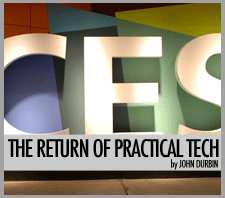Tweeting for Dollars
Posted by Dan Buczaczer | November 1, 2012I think we all gave the same disbelieving headshake the moment we learned that Kim Kardashian pulls in $10K for a promotional tweet (unless you didn’t yet know, in which case you’re doing it now). Increasingly, it appears similar offers may be on their way to you and me (albeit at a drastically reduced rate). More and more companies are willing to give out discounts, merchandise or even cold, hard cash in exchange for you utilizing your social networking tools on their behalf.
Groupon and Endorse will sweeten their deals if you get your friends to join in. Monkeybars will give you a cut of the action if the music acts you promote start selling more. Pay With A Tweet has become a more popular way to acquire something you want. Kellogg’s even set up a physical pop-up store in London and let people walk out with a bag of Special K Cracker Crisps after paying with a tweet. These are innovative models that have shown some early success. But I predict most, if not all, of these approaches won’t be broadly effective in the long-term. That’s because too many of these approaches feel like a straight up bribe: you say something nice about me and I’ll give you something in return. (Anyone remember Pay Per Post?) Worst of all are contests brands hold on Twitter, offering the chance to win prizes galore to consumers who use a specially-designated corporate promotional hashtag in a tweet.
Incentivizing customers is a good idea but great brands offer an experience, not just a product. And customers are loyal because they love that brand and that experience, not because they are paid. Spurring customers to use social media on behalf of a brand is a great idea but should be tied to the experience itself. The value brands should give back in return for advocacy is a better, deeper experience. Services like Spotify, Yelp, and Nike+ (because it wouldn’t be a marketing post without mentioning Nike+!) cause people to happily share their activity on social platforms because it says something about who you are – what you listen to, where you eat, how far you ran – and creates a better experience.
This holds equally true for offline brands (though Nike again gets credit for being in both categories). Toshiba and Intel have produced a set of social films on Facebook (each featuring an Intel-powered Toshiba laptop) that allow fans to collaborate via Facebook on the creation of each film. Mercedes-Benz held the first-ever , allowing you to virtually power real-life Mercedes cars using Twitter (created by Razorfish and Denuo). And pizza chain Mellow Mushroom may send out their mascot to physically follow you if you follow them on Twitter (some call this stalking but let’s not wordsmith here). Each of these are absorbing experiences that get customers to use social media in the service of brands because they actually want to, not because a carrot with dollar signs was dangled in front of them.
As brands seek out ways to get their fan base talking and sharing they need to prioritize building creative experiences that legitimately get people involved. It takes more planning and work up front but will ultimately generate a more effective base of support from your customers.
Leave a Comment
RSS feed for comments on this post · TrackBack URI



